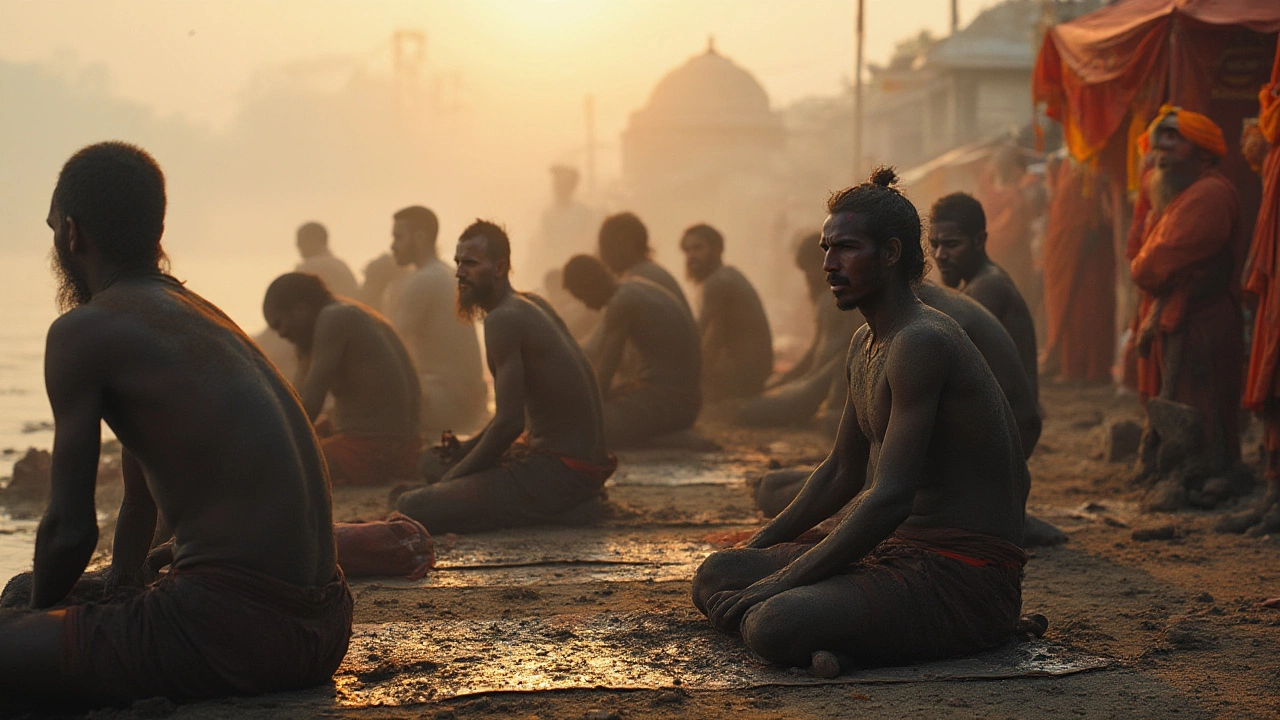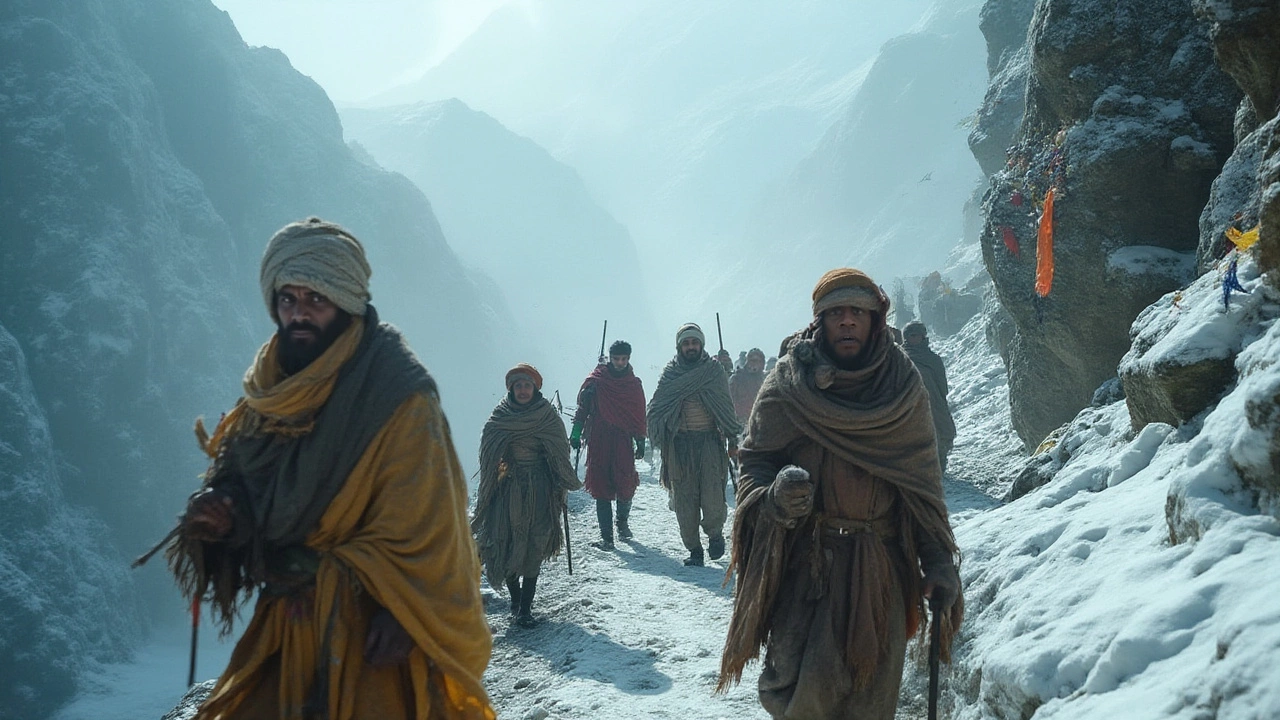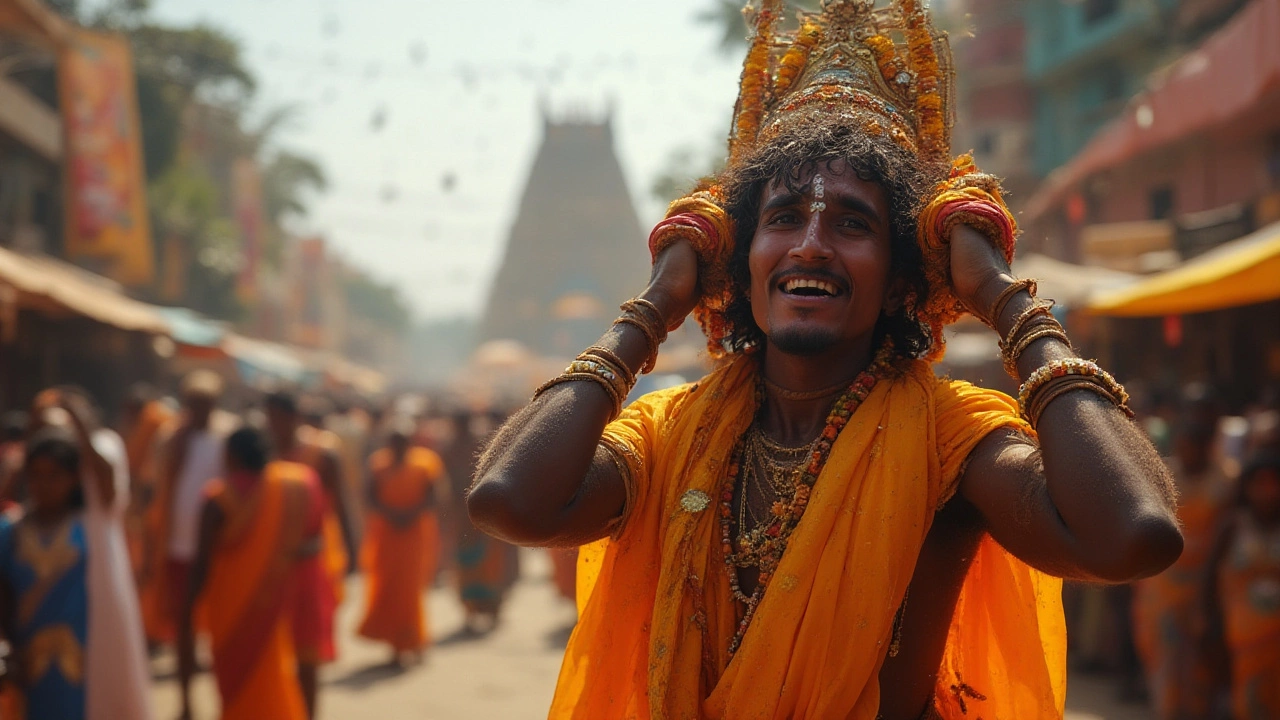Every year, people in India push their bodies and minds to limits that you don’t see anywhere else on Earth. This isn’t about big crowds or music, but about the sort of grit that can leave scars, tell stories, and even spark lifelong debates. Some of India’s traditional festivals demand unwavering faith and physical endurance—turning celebration into a true test. So, which Indian festival takes the crown for being the toughest, most challenging of them all? Let’s talk facts, stories, and spirit, and find out just how far devotion can go.
What Makes a Festival "Hard"? The Toughest Indian Rituals Explained
Hardness isn’t about spending days in a music field or queuing up for sweet treats. In India, some festivals ask for real sacrifice: walking on fire, piercing the skin, fasting for days, even risking life. Ask anyone who’s watched Thaipusam in Tamil Nadu, and you’ll hear stories that stay with them for years. Devotees pierce their cheeks, tongues, and bodies—with spears, hooks, or skewers—while carrying heavy “Kavadi” structures on their shoulders. The pain is meant as an offering, an expression of thanks or as a plea for help from Lord Murugan.
But Thaipusam isn’t the only test of faith. The Kumbh Mela, held every twelve years in rotation at four river-bank cities, is the largest religious gathering on earth. Take 50 million people, add freezing river water, sleep deprivation, and days of non-stop rituals. The sadhus—India’s holy men—walk barefoot for days, often naked or smeared in ash. The act isn’t just about religious cleansing; it’s about letting go of comfort for a higher cause. Some participants spend days in icy waters or perform “Tapasya” (extreme penance) standing on one leg for hours or even days.
Let’s not forget the Agni Keli from Karnataka, where men literally throw balls of blazing fire at each other to honor Hindu goddess Durga. Or the Velakkali folk dancers in Kerala, who go without food and water while performing a war dance in blazing summer heat. These traditions push bodies to their edge with a mix of adrenaline, devotion, and a little bit of madness.
| Festival Name | Main State | Main Physical Challenge | No. of Participants (Approx) |
|---|---|---|---|
| Thaipusam | Tamil Nadu, Malaysia | Bodily piercings, Kavadi carrying | 1+ million |
| Kumbh Mela | Uttar Pradesh, Uttarakhand, Madhya Pradesh, Maharashtra | Barefoot walks, River dips, Fasting | 50+ million |
| Agni Keli | Karnataka | Fireball fighting | 5,000 |
| Velakkali | Kerala | Fasting, War dance | 2,000 |
| Painkuni | Kerala | Spear piercing, Physical endurance | About 10,000 |
What links these festivals is their call for sacrifice. Instead of easy celebration, it’s hardship, pain, and sometimes, a brush with danger. If you just want lights and dance, Diwali and Holi are overflowing with joy, but the real tough stuff? These are for the bold, the faithful, or the slightly crazy.

Inside Thaipusam: The Painful Path of Devotion
When people ask, "which is the hardest festival in India?", Thaipusam very often comes up. Yes, the hardest festival in India is widely recognized as Thaipusam—because it’s not just about mental willpower. It’s a raw contest between mind and body that’s hard to imagine until you see it up close.
Thaipusam takes place in January or February, especially in Tamil Nadu, but also in Singapore and Malaysia where Tamil communities have settled. The festival honors Lord Murugan, son of Shiva and Parvati. On the big day, devotees prepare through fasting, abstinence, and prayer, often for weeks ahead. When the rituals start, crowds line the roads to cheer, but the main focus is on the devotees walking barefoot up steep steps to temples—while burdened with elaborate ‘Kavadi’. This isn’t a simple backpack. We’re talking metal and wooden frames, sometimes as high as 2 meters, loaded with milk pots, peacock feathers, and even weights.
The rituals get even tougher. Many choose to pierce their skin and tongues with sharp skewers and hooks, attaching the Kavadi directly to their bodies. Wait, why the pain? For many, it’s a way to express thanks, seek blessings, or fulfill a vow made in tough times. Doctors and religious leaders check participants before and after to make sure things don’t go too far; still, fainting and blood loss aren’t rare. Some estimate over 50,000 take part each year in Tamil Nadu alone, but the biggest processions in Malaysia can see over a million watching or joining in.
There’s also a tradition of trance—music, drums, and chanting can send some devotees into a state where they claim to feel little pain. Watch it happen, and you’ll see faces both racked with agony and glowing with faith. The medical explanation? Endorphins and adrenaline go into overdrive. For outsiders, the whole process looks like punishment. For locals, it’s the mark of true devotion.
You might ask: do regular people join in? Yes—and no. Participation in piercing or carrying heavy Kavadi is usually for those who’ve made a personal vow, either to recover from illness, for family needs, or as a show of gratitude. Not everyone chooses piercing; some carry simple milk pots (Paalkudam) instead. But the festival’s heart is in its ability to push boundaries, both mental and physical, and to turn suffering into celebration.
Surprising fact: While Thaipusam catches media attention for dramatic images, it operates under a strict set of spiritual and medical rules. Volunteers watch for anyone in danger, and there are entire support teams offering water, juice, and first aid along the route. If you ever visit, don’t treat it like a party. Respect the rituals, dress conservatively, and ask before taking photos.
Want to actually join in? Locals recommend training your mind and body with simple fasts or meditative walks first. Talk to priests and long-time participants. The pain is real, but the pride—the feeling you get after finishing the walk or reaching the hilltop shrine—can be life-changing. You’ll see mothers walk for kids, teens test limits, and elders give advice from decades of experience.

Survival Guide: Experiencing Tough Indian Festivals Up Close
If reading this fires you up to see India’s toughest festivals for yourself, be ready: no amount of Instagram or documentaries can prepare you for the reality. To get a front-row experience without stepping over into danger, here are a few tips and facts straight from locals and repeat visitors.
- Start with research. Each festival has strict rules and deep history. Don’t just show up; read the backstory and the do’s and don’ts.
- Dress the part. Keep it loose, light, and modest—think cotton shirts, shawls, and sandals. Leave the shorts and tank tops at home.
- No selfies during rituals. This isn’t a tourist zoo. Always ask before snapping pictures, especially during private vows or piercings.
- Respect local customs. Fast along with locals if you want to feel the spiritual side, but don’t feel pressured to take on things you’re not ready for.
- Watch for free food lines. At almost every festival, volunteers hand out meals—join them after the main rituals. This is a crash course in local hospitality.
- Bring your own water and first-aid kit. With large crowds, it’s easy to get lost or dehydrated, especially at events like Kumbh Mela.
- Plan your travel smart. Traffic jams aren’t just common—they’re a fact of life. Expect blocked streets, long walks, and last-minute detours.
Meeting people who’ve walked on fire or carried Kavadi for miles, you’ll notice shared themes: stories of healing, surviving impossible odds, or finding hope through pain. These aren’t just wild tales; they’re living proof of the will to overcome, to be something more than yourself.
And then there’s the matter of safety: While most cities now enforce strict medical supervision, there’s always risk. Still, most injuries tend to be minor—a few stitches, bruises, dehydration. Fatal incidents are rare, but they do happen, especially if festival-goers ignore rules or push their bodies too far. It’s all about knowing your own limits and respecting the seriousness of what’s going on.
If you want to get even closer, volunteer for a local group during one of these festivals. Help out with water stations or medical tents. Talk to elders and priests, ask about why—and how—they do it. Not only will you gain respect, but you’ll get a real, unfiltered sense of what keeps these ancient traditions alive. People might even invite you to family celebrations or quiet, behind-the-scenes moments far from the crowd.
The truth is, no single festival or ritual can claim the title without debate. But the next time you hear about “hardest festival in India,” remember: it’s about more than pain or spectacle—it’s about history, faith, and the adventures people will go on for both. Next January, if you’re anywhere near Tamil Nadu, maybe think about Thaipusam—not as a bystander, but as a journey through one of the world’s most unique, demanding, and deeply human celebrations.
